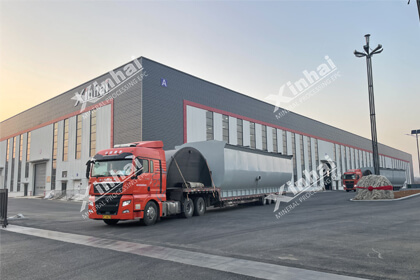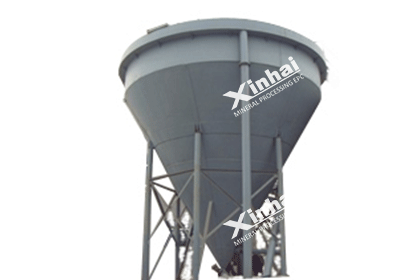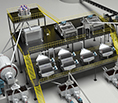A Complete Guide to Magnesite Mining and Processing
 Laura
Laura
 Oct 31, 2025
Oct 31, 2025
 695
695
If you want to know more details about equipment, solutions, etc, please click the button below for free consultation, or leave your requirements!
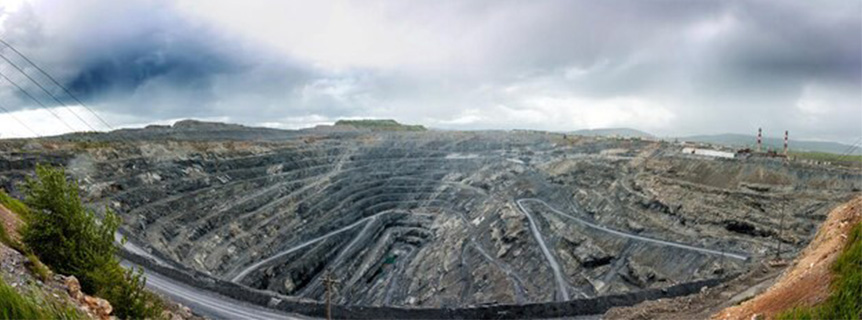
Magnesite mine
Magnesite, a naturally occurring mineral primarily composed of magnesium carbonate (MgCO3), plays a vital role in various industries due to its high melting point, heat-resistant properties, and ability to neutralize acids. It's mainly used in the production of refractory materials, ceramics, fertilizers, magnesium metal, and even in environmental applications such as carbon capture. As global demand for these materials grows, understanding the magnesite mining and processing steps is crucial for industry stakeholders.
In this comprehensive guide, we’ll walk you through everything you need to know about magnesite mining, from exploration and extraction methods to processing techniques and uses of the refined product.
What is Magnesite?
Magnesite is a white, crystalline mineral composed primarily of magnesium carbonate (MgCO3). It is most commonly found in sedimentary rocks, especially in areas where magnesium-rich minerals have undergone chemical weathering. The mineral can vary in purity and is typically found in vein, bed, or massive deposits.
Magnesite is an essential raw material in various applications:
Refractory materials: Magnesite is used in the production of bricks and lining for steel and cement kilns.
Magnesium metal production: Magnesite is processed to extract magnesium, which is used in lightweight alloys and various industrial applications.
Environmental applications: It can be used in water treatment and carbon dioxide capture.
01Step 1: Exploration and Site Assessment
BackThe first step in magnesite mining is exploration. Geologists use a combination of geological surveys, drilling, and other exploration techniques to identify potential deposits. Once a site is identified, further assessment is conducted to determine the size, grade, and quality of the magnesite deposit.
Geological Surveys: Preliminary surveys help map out areas rich in magnesium carbonate. These surveys may involve aerial surveys, satellite imagery, and topographical mapping to pinpoint promising regions.
Drilling: Core samples are taken from drilled wells to determine the mineral content and estimate the size of the deposit.
Assay Testing: Samples are sent to labs for chemical analysis to determine the purity and quality of the magnesite.
Once the deposit is proven, a detailed mining plan is drawn up, taking into account factors such as mining method, environmental impact, and cost-effectiveness.
02Step 2: Extraction Methods
BackMagnesite extraction involves various mining methods, depending on the deposit's depth, structure, and location. The two primary methods of extraction are open-pit mining and underground mining.
1. Open-Pit Mining
Open-pit mining is the most common extraction method when the magnesite deposit is close to the surface. The process involves removing layers of soil, rock, and other material (overburden) to access the magnesite ore beneath.
Advantages: Open-pit mining is generally more cost-effective and faster, especially for shallow deposits.
Disadvantages: It can lead to significant environmental impacts, including landscape disruption and habitat destruction.
2. Underground Mining
When the deposit is deeper, underground mining becomes necessary. This involves creating tunnels or shafts to access the ore body. The extracted material is transported to the surface via lifts or conveyors.
Advantages: Less surface disturbance and is suited for deeper deposits.
Disadvantages: Underground mining is more expensive due to the specialized equipment and safety requirements.
03Step 3: Crushing and Screening
BackOnce the magnesite ore is extracted, it is transported to a crushing plant where it undergoes crushing and screening. This step is essential for reducing the size of the ore and preparing it for further processing.
Crushing: The large blocks of ore are broken down into smaller fragments using jaw crushers or gyratory crushers. The crushed ore is then sent for screening.
Screening: The crushed ore is sifted to separate finer particles from larger chunks. This ensures that only the desired size particles are processed further.
04Step 4: Beneficiation: Purification and Concentration
BackBeneficiation is the process of separating the valuable magnesite from waste materials, improving its purity and concentration. Various techniques are used for magnesite beneficiation, including:
1. Froth Flotation
Froth flotation is one of the most common methods for separating magnesite from impurities. The ore is mixed with water and chemicals that allow magnesite to float while waste materials sink.
Collectors: Chemicals that help make magnesite hydrophobic (water-repellent) so it will float.
Froth: The resulting froth, containing concentrated magnesite, is skimmed off the surface and sent for further processing.
2. Gravity Separation
Since magnesite has a relatively high density, gravity separation can be used to separate it from lighter gangue materials. In this process, the ore is subjected to centrifugal forces, often using equipment like jigs or shaking tables.
3. Magnetic Separation
Magnesite is typically non-magnetic, but if the ore contains magnetic minerals, magnetic separation can be used to remove those unwanted materials.
05Step 5: Purification and Refining
BackAfter beneficiation, magnesite concentrate may still contain impurities like iron oxide, silica, and other minerals that need to be removed. Several purification and refining methods are used:
1. Chemical Purification
In this method, the magnesite concentrate is treated with acids (like hydrochloric acid) or other chemicals to dissolve impurities. The purified magnesite is then washed and neutralized.
2. Calcination
Magnesite can also be purified by heating it to high temperatures in a kiln or furnace, a process called calcination. This results in dead-burned magnesia (MgO), which has improved physical properties and is ideal for use in refractories.
3. Hydrometallurgical Methods
Hydrometallurgical techniques can also be applied to purify magnesite. These methods involve the use of aqueous solutions to extract magnesium, which is later converted into magnesium oxide or magnesium hydroxide.
06Step 6: Final Processing
BackAfter purification, magnesite is further processed depending on its intended use. The final forms of magnesite can include:
Magnesium oxide (MgO): Used in producing refractories, as a flux in steel production, and as an industrial chemical.
Dead-Burned Magnesia: A high-purity product used in the production of refractory bricks for steel furnaces and cement kilns.
Magnesium Metal: Extracted from magnesite and used in alloys for the automotive and aerospace industries.
Magnesite may also be ground into fine powders for use in fertilizers, cosmetics, and water treatment.
07Step 7: Packaging and Distribution
BackAfter processing, the final product is carefully packaged and distributed to various industries. Depending on the application, magnesite may be sold in bulk, as powder, or in specific forms such as bricks or tiles for industrial use.
*Environmental Considerations in Magnesite Mining*
Like all mining activities, magnesite mining can have significant environmental impacts. These may include:
Habitat destruction: Open-pit mining can disrupt ecosystems and wildlife habitats.
Water use: Water-intensive beneficiation processes can strain local water supplies.
Carbon emissions: The calcination process releases CO2, contributing to greenhouse gas emissions.
To mitigate these impacts, mining companies are adopting sustainable practices such as:
Water recycling: Using closed-loop water systems to minimize water consumption.
Rehabilitation: Restoring mined areas to prevent long-term environmental damage.
Carbon capture: Using carbon capture technologies to offset CO2 emissions from the calcination process.
08Conclusion
BackMagnesite mining and processing are complex processes that involve several steps, from exploration and extraction to beneficiation, purification, and final product production. The mineral’s versatility and importance in industries like steelmaking, refractories, and magnesium production ensure its continued demand globally. Understanding the mining and processing techniques behind magnesite will help industry stakeholders better navigate its growing role in global industrial applications.
This guide offers a comprehensive look at magnesite mining and processing, highlighting key methods, environmental considerations, and applications.
Feel free to contact us and learn more about magnesite processing solutions!
 +86 183 3575 8886
+86 183 3575 8886 pinklaurabao@gmail.com
pinklaurabao@gmail.com



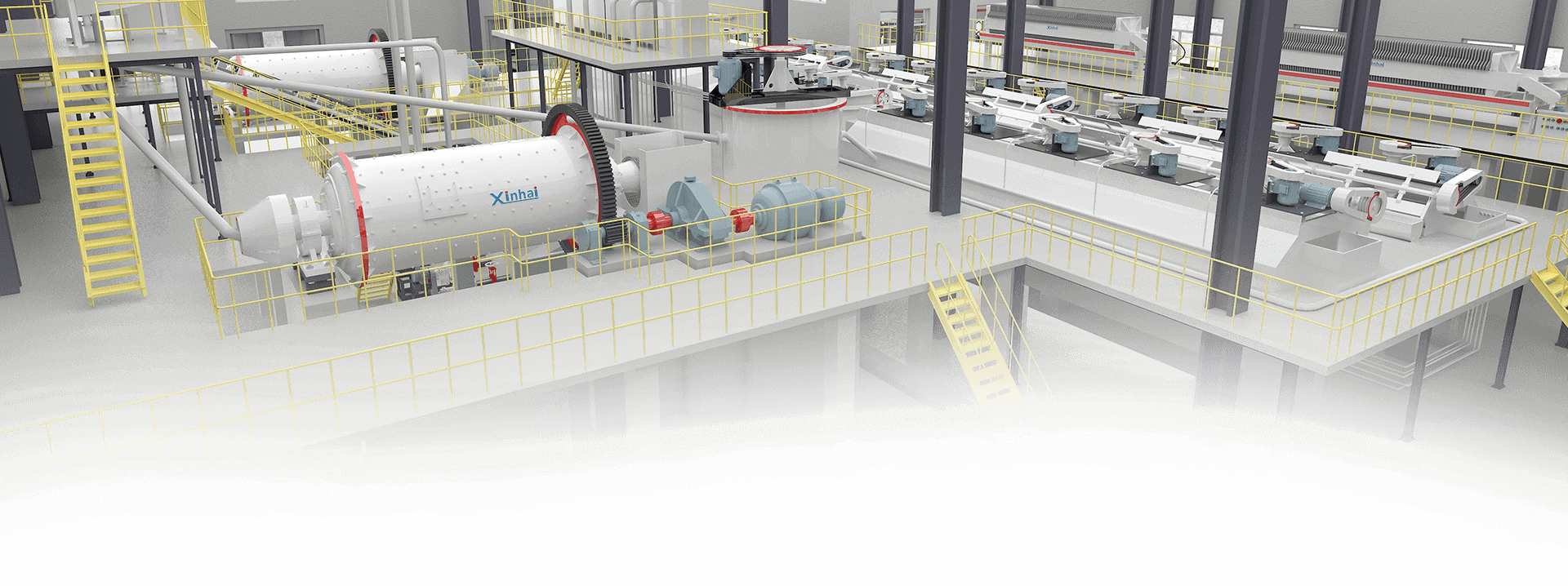
 Message
Message Chat Now
Chat Now


